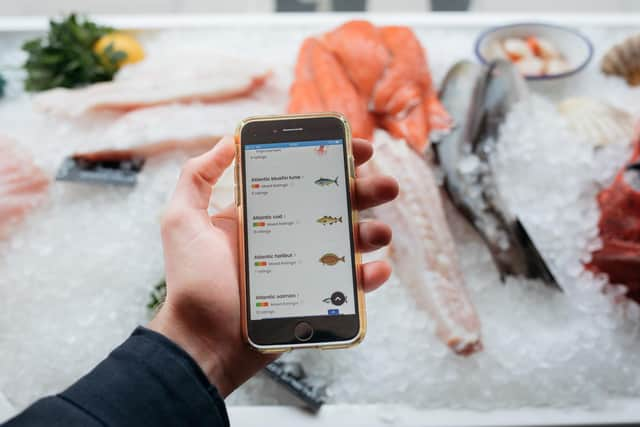Find out which seafood you should and shouldn't eat in the latest Good Fish Guide to sustainability
The guide, produced by the Marine Conservation Society and available as an app, uses a traffic light system to indicate to consumers which seafood is the most sustainable – green is the ‘best choice’; amber is ‘OK to eat’ but improvements are needed; and red indicates ‘fish to avoid’.
It is updated twice a year with all species reviewed every one to three years.
Advertisement
Hide AdAdvertisement
Hide AdThe latest assessment ranks 14 species as ‘fish to avoid’, while only 10 are marked ‘best choice’.
New ratings for Scottish crab and lobster have been added to the guide for the first time this year, with catches from eight of the nine locations listed with an amber or red grading.
Fears of over-fishing and risks to whales through entanglement with ropes are behind the gradings.
Only brown crab from Shetland has been awarded a green ‘best choice’ rating in the UK.


Langoustine remains at amber, ‘OK to eat’, if harvested by trawling but has a green rating if caught in creels.
North Sea herring has returned to the ‘best choice’ list.
Monkfish from the North Sea and west of Scotland have been downgraded to the ‘fish to avoid’ list as numbers have declined from a peak in 2017 to their lowest level since 2013.
The MCS says this is because management is poor and fishing pressure too high.
Monkfish caught in the Celtic Sea, in the southwest UK, remains amber-rated.
Advertisement
Hide AdAdvertisement
Hide AdCod, whiting and haddock from the Celtic Sea have a mixture of ratings because the three species swim and feed together, meaning they are often caught together regardless of which fish are being targeted.
Cod and whiting are at dangerously low levels in the area, with scientists recommending that no cod should not be caught there.
Meanwhile haddock stocks are at healthy levels but catches are exceeding scientifically recommended limits.
Most skates and rays have been graded ‘fish to avoid’, with none given green ratings and very few amber options.
The environmental charity is calling for urgent improvements to fisheries management around the UK to improve the marine environment, safeguard fish stocks, protect important livelihoods and guarantee future food supplies.
UK governments are currently consulting on a new legislative framework for managing local fisheries, known as the Joint Fisheries Statement, and introducing a number of fishery management plans.
These will provide a new overarching policy direction for UK fisheries, which are devolved.
READ MORE: Clam cam footage reveals important Scottish nursery ground for endangered fish
The MCS says the new framework presents a crucial opportunity to make much needed improvements to how fishing, fish stocks and environmental concerns are managed.
Advertisement
Hide AdAdvertisement
Hide AdClara Johnston, fisheries policy manager at the MCS, said: “For a thriving industry, future food security and the health of our ocean, it’s crucial that the UK governments seize the new opportunities posed by the Joint Fisheries Statement and fisheries management plans to fix our fisheries.
“The latest Good Fish Guide ratings – where all new UK ratings are either amber or red rated – illustrate the urgent need for transparency and better management if we’re to recover fish stocks in UK seas.”
A message from the Editor:
Thank you for reading this article. We’re more reliant on your support than ever as the shift in consumer habits brought about by coronavirus impacts our advertisers.
If you haven’t already, please consider supporting our trusted, fact-checked journalism by taking out a digital subscription.
Comments
Want to join the conversation? Please or to comment on this article.
